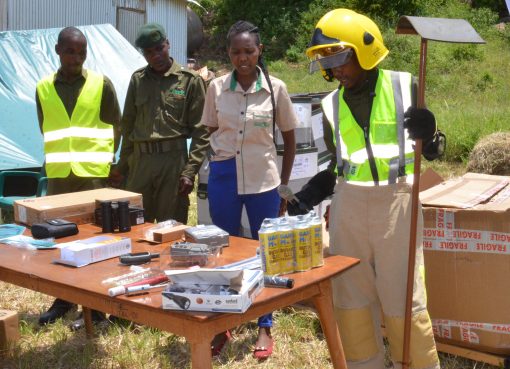Kenya Wildlife Service (KWS) is undertaking a lion-census in Tsavo Conservation Area to establish reasons for increased livestock predation by the canines in Taita-Taveta County.
KWS Senior Warden for Community Service Zainab Salim said the census, which kicked off in February, would also help in predicting trends that would assist it reducing incidences of livestock predation by lions in the region.
Speaking in Mwatate, Ms. Salim said the current census was specifically targeting lions but would also loop in leopards, cheetahs and other canines known to attack livestock in human-settlement areas.
“We are undertaking the exercise to help us understand the patterns of lions in the region. The data will be used for sound management of canines in Tsavo ecosystem,” she said.
The census is being conducted in Tsavo National Park and across the 28 ranches where wildlife roam.
Salim said the increase in livestock predation was worrying and thus a need to find a reason why. Once done, the results would be used by KWS to better manage and prevent lions from attacking livestock in villages adjacent to Tsavo National Park. This would also safeguard farmers from losses brought about by loss of livestock.
The census comes in the wake of sharp spate of nocturnal attacks on livestock by leopards and lions in the region.
In December 2018, several villages including Chawia, Bura, Ndembwa and Maktau lost dozens of livestock to lion attacks. The attacks prompted local leaders to threaten to organize teams to hunt the predators. However, a special KWS team was dispatched to the area and trapped three young lions.
In January, KWS trapped a stray leopard at Maungu area. In October 2018, KWS officials were called to rescue a male cheetah that had killed five goats at New World area in Canaan along Nairobi-Mombasa Highway.
Statistics by County Wildlife Conservation and Compensation Committee showed that between 2014 and 2016, 293 livestock deaths were reported in the region. The highest deaths were goats recorded at 179. Other animals killed included cows, sheep and donkey.
The statistics further showed that hyenas were the most common villains having killed 114 of the total animals reported. Lions came second with 78 animals.
Salim said the census report would generate a management plan that would help in understanding better the behavior of predators.
By Wagema Mwangi



